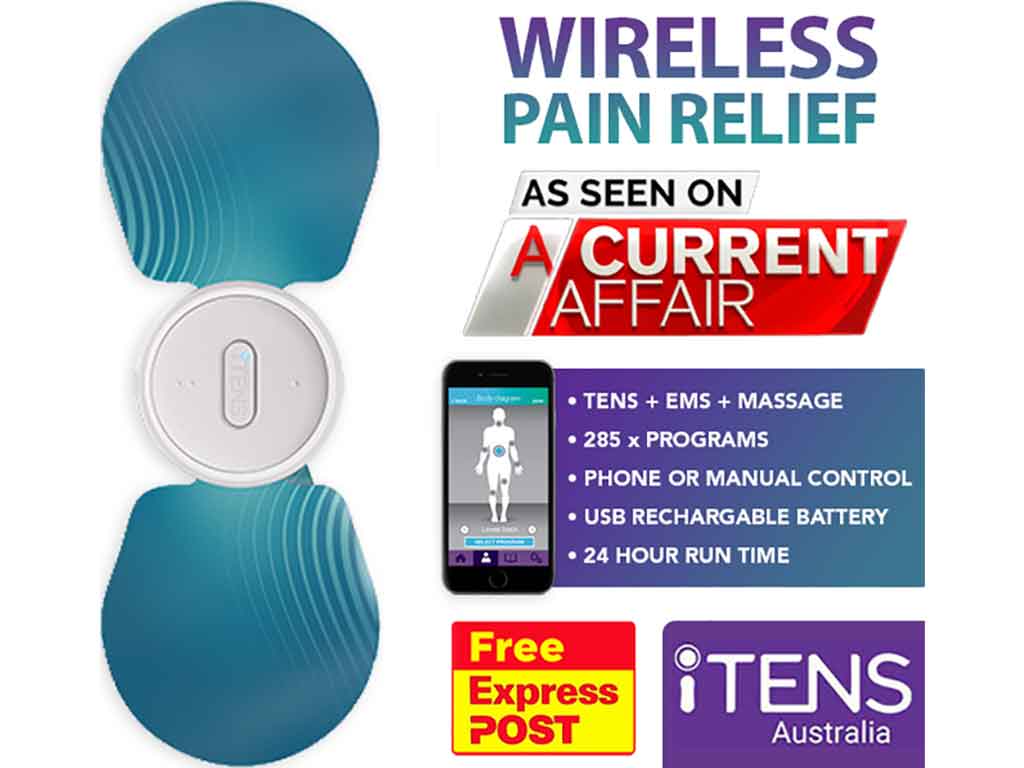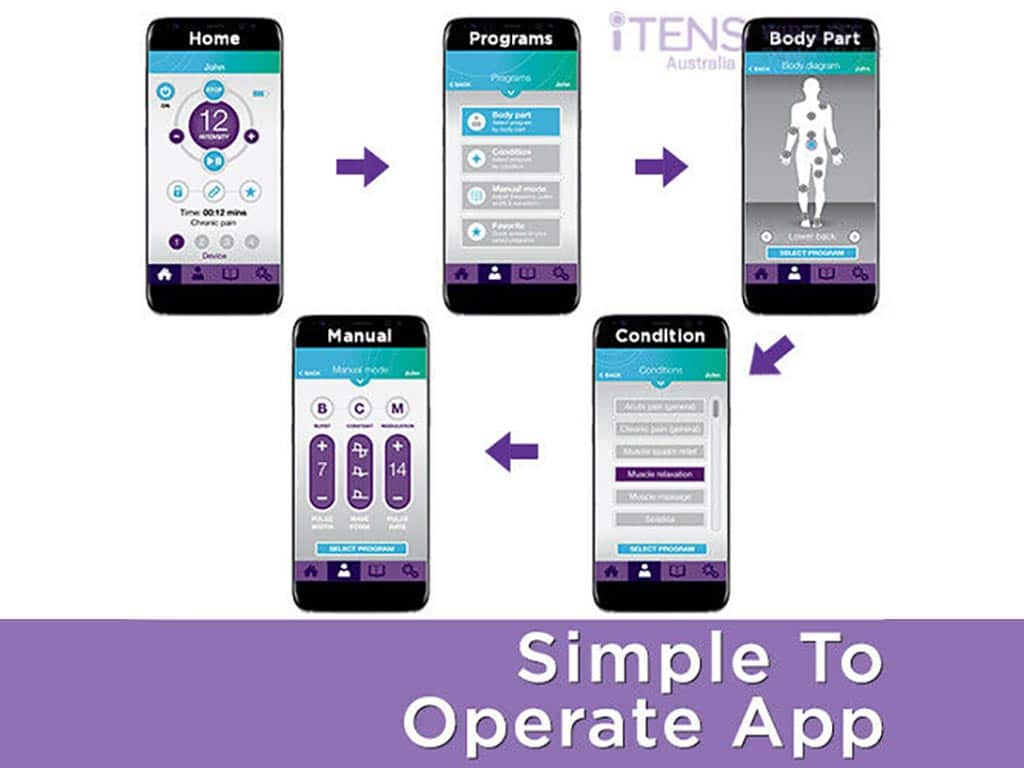
A Transcutaneous Electrical Nerve Stimulation (TENS) unit is a pain relief device that can treat a wide range of pain conditions, including Irritable Bowel Syndrome (IBS). It works by blocking pain signals and can also trigger the release of endorphins, which are natural pain relievers. To operate the TENS unit for IBS, individuals must place the electrodes on their lower abdomen, turn on the unit, and adjust the settings.
IBS is a medical condition that impacts the function of the large intestine. Symptoms may include cramping, abdominal pain, bloating, gas, diarrhoea, and constipation. Common treatment methods for this condition typically include lifestyle adjustments, oral medications, high-fibre foods, and a heating pad. However, they may not offer full relief for every individual. This article will present what a TENS device for IBS is, including its proper usage and mechanism of action.
What is a TENS Unit for IBS?
TENS is a method of pain relief that utilises a portable device that sends low-voltage electrical impulses to stimulate the nerves. It provides localised pain relief through the placement of adhesive electrode pads on the targeted area. Specifically, a TENS unit for IBS targets the nerves in the gut that send pain signals to the brain.
Two types of TENS devices are available for individuals: standard and wireless. A standard TENS machine typically includes a handheld push-button remote and wires that connect to electrode gel pads. In contrast, a wireless TENS machine uses Bluetooth to link with a smartphone application. This product is popular among those who value portable and easy pain relief options. Nevertheless, both types deliver adequate electrical stimulation.
The TENS electrodes are interchangeable with different sizes and shapes. Each can help fit various body areas and deliver appropriate electrical stimulation levels. Additionally, the pads stick firmly to the skin without causing any penetration or leaving lasting marks. It is worth noting that TENS is not a cure for pain but only provides temporary relief from discomfort.
Common Symptoms Experienced by Individuals with IBS
- Abdominal pain: Individuals with IBS often experience abdominal cramps or discomfort in the stomach area, which can range from mild to severe pain in patients.
- Gas: Excessive air is passed from the digestive system, leading to discomfort, bloating, and sometimes audible sounds.
- Diarrhea: Those with IBS may frequently experience loose or watery stools.
- Constipation: Bowel movements may become difficult to pass, or individuals may experience irregular bowel motions.
- Bloating: They may feel a sense of fullness and swelling in the abdomen, often accompanied by visible distention.
- Cramping: Sharp or dull pains may occur in the abdomen, varying in duration and intensity levels.

How a TENS Unit for IBS Works
A TENS unit for IBS works in two mechanisms. Firstly, the low-voltage electrical currents override the nervous system. TENS activates the large-diameter sensory nerves to close off the “gate” in the spinal cord. This method induces them to block the transmission of pain signals from reaching the brain. Moreover, the tingling sensations distract the brain from perceiving pain.
Secondly, electric nerve stimulation triggers the production of endorphins, the natural painkillers. When endorphins are released, they bind to specific receptors in the brain, spinal cord, and other body parts to help block pain messages from being transmitted. In addition to reducing the feeling of pain, they also produce feelings of euphoria, which can help improve mood and decrease stress levels.
Individuals with IBS should consult a doctor before using a TENS machine, especially if they have other underlying medical conditions or are pregnant. TENS may not be suitable for people with heart problems, epilepsy, and implanted medical devices like a pacemaker. Professionals may advise on the proper use of a TENS unit or suggest other treatment plans.
Advantages of Using TENS
TENS provides numerous advantages to users. Firstly, it is a non-invasive and drug-free method of pain relief. It helps eliminate or minimise pain sensations or other discomforts without pain medications. Secondly, the device is portable and easy to use. It is more compact and lightweight than the electrotherapy machines in pain clinics.
Thirdly, it provides personalised pain relief through customisable programs. The device has adjustable settings, such as intensity, pulse rate or frequency, and pulse width or duration. Lastly, TENS is cost-effective. It minimises the need for people to go to regular therapy sessions or health professional visits.

How to Operate a TENS Unit for IBS
Operating a TENS unit for IBS is quick and easy. Start by placing the electrodes on the abdomen. The placement should cover the affected area. Ensure the machine is off before placing the TENS pads to avoid discomfort. Once the electrodes are in place, turn on the unit and adjust the settings.
Set the frequency levels between high (50-120 Hz) or low (2-10 Hz) depending on the severity of pain symptoms. Next, adjust the intensity setting starting at the lowest level. Gradually increase the intensity to a comfortable level until there is a mild tingling or tapping sensation. Health experts often recommend using the device for about 20-30 minutes per session, several times a day as needed.
During use, giving the body sufficient time to react to the electrical stimulation is essential. After the therapy session, turn off the device before removing the electrode pads. With regular use, many people find significant improvement in their IBS symptoms. Remember to keep track of how the treatment affects the symptoms and adjust the settings accordingly.
Where to Place the Pads?
IBS-related pain tends to focus on the lower abdomen. Thus, the correct placement of electrodes is on either side of the lower belly or below the belly button. The pads should be spaced evenly at two-inch intervals for optimal stimulation.
However, the placement may vary depending on the individual and where the symptoms are most prominent. Another area to put the electrodes is at the lower back. This is especially helpful for individuals who experience backache as a symptom of their IBS. It is vital to experiment with different pad placements and adjust as necessary.
Conclusion
In conclusion, a TENS unit for IBS offers pain relief by sending gentle electrical pulses to nerves in the gut. It works by blocking pain signals and triggering the release of endorphins. This device, available in standard and wireless types, uses adhesive electrode pads for targeted stimulation. Before using a TENS unit, individuals with IBS should seek advice from a doctor, especially if they have other medical conditions or are pregnant.
Operating a TENS device for IBS involves placing electrodes on the abdomen or lower back. Start by positioning the pads correctly, then adjust the settings to a comfortable level. Use the device for 20-30 minutes per session, several times a day as needed. Allow the body time to respond to the electrical stimulation, and remember to track how it affects symptoms. With regular use and proper adjustments, many people experience significant relief from IBS discomfort.







